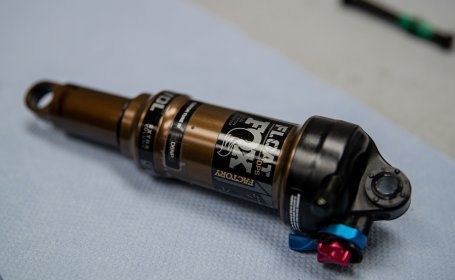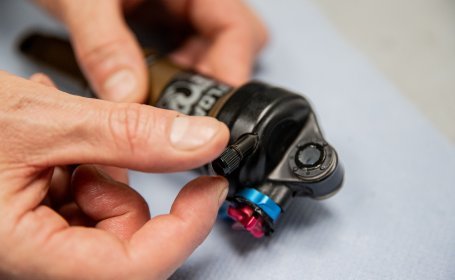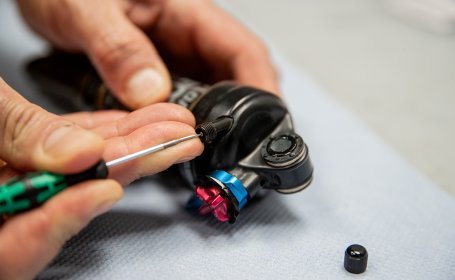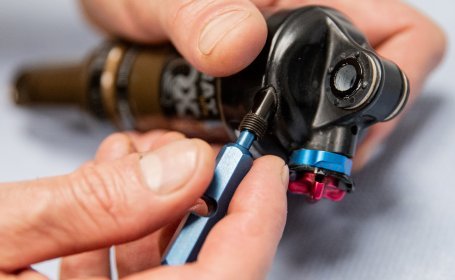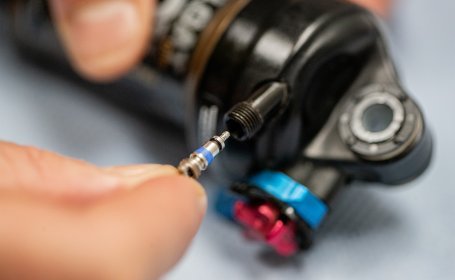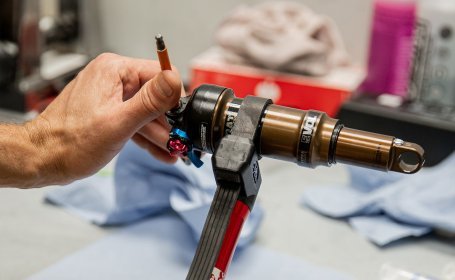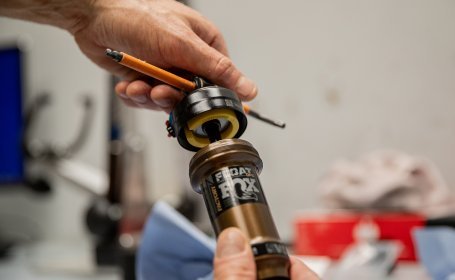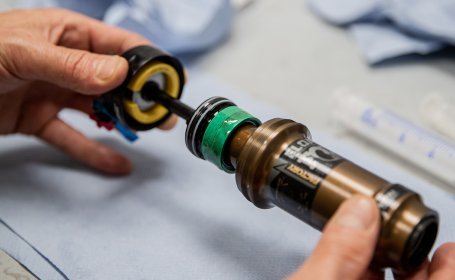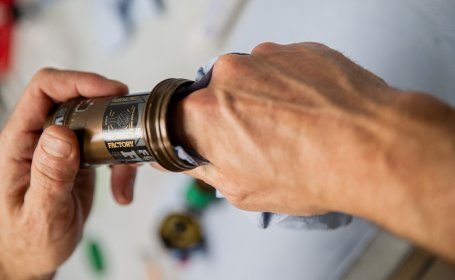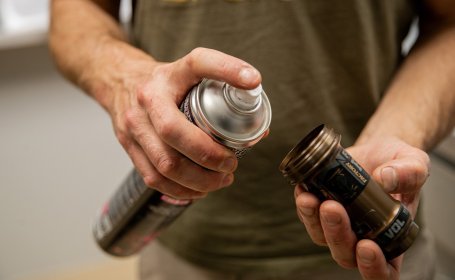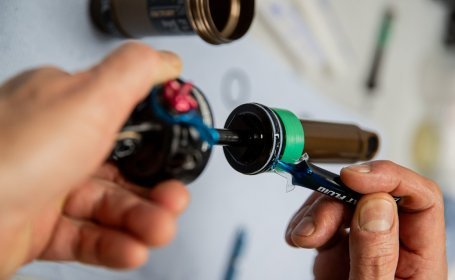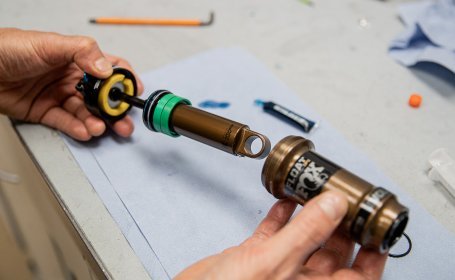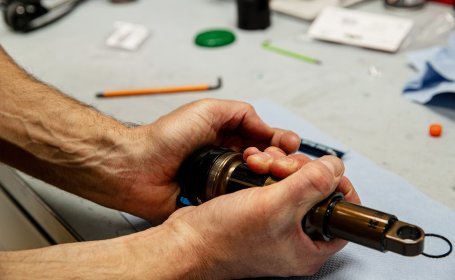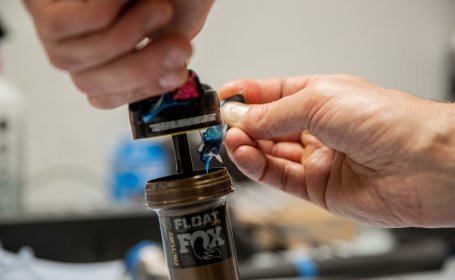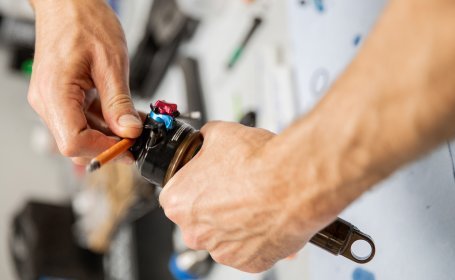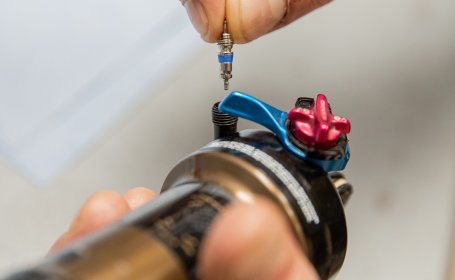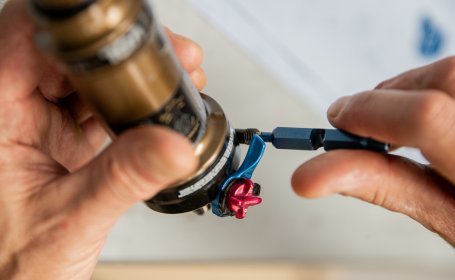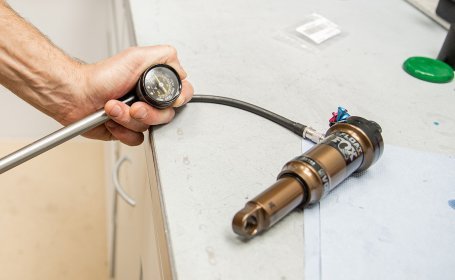
How To: Inspect Your Bike
Ready for the season? We’ll show you how to prepare your bike for the upcoming season and which parts require special attention.
A shock can only show its qualities if it's properly lubricated. We'll show you the air chamber service using a Fox DPS shock as an example.
Shocks are a dime a dozen: From compact, simple XC-inline models to tech-loaded downhill flagships, with or without a reservoir, as coil spring or air spring variants. But no matter if you're in the entry-level or high-end territory: The core mission of every shock is to filter out impacts from the ground as much as possible, to not lose ground contact and to let you "glide" smoothly over the trail. Both aspects are there to maintain as much control over the bike as possible, allowing you to ride safely, consistently, and without fatigue at high speeds in rough terrain.
Although coil shocks have experienced a small renaissance, most of you, especially in the Cross Country to Enduro range, will be using air shocks. They are very versatile as the spring rate can be easily adjusted with a shock pump, and they almost match coil shocks in terms of performance.

The real fun comes with a smooth suspension.
In theory, air shocks have a disadvantage over coil springs because the seals in the air chamber create friction, which slightly hinders performance, as friction always causes some inertia and makes the shock less responsive. The seals are lubricated, but the lubrication wears out over time. Without renewal, the main seal soon runs dry over the piston rod, and the dividing piston seal also runs dry in the air chamber. Especially in the transition between compression and rebound, the shock becomes stiff, making the suspension "choppy," and the involved components wear out even faster.
With regular service, lubrication at the "friction points" is always maintained. We recommend for casual riders, at least once a year, and for ambitious riders, at least twice a year to get a service. If you're racing at a higher level, it makes sense to service the shock just before the race weekend if you want to get the most out of the performance.
You've probably heard these terms before, but what's behind them? The small service is basically the air chamber service, where the piston rod and seals are cleaned and re-lubricated. It's very simple since you just need to remove the air chamber and don't have to dismantle the shock completely. However, if your shock makes squelching and slurping noises, it's time for a "big" service because air bubbles have formed in the oil, which significantly impair the damping function.
We're covering the small service here, since it's easy to do yourself and usually has the biggest effect on the performance of the suspension. We'll happily leave the big service in the hands of the professionals at the respective manufacturer.

Serious speed on rough terrain? No problem with sensitive suspension!
Here are the tools and supplies you need for your shock service
Since this question keeps coming up, we want to clear up a common misunderstanding. It's advisable to measure the pressure before releasing the air, in case you don't remember it offhand. However, when you screw the shock pump hose onto the valve, you increase the air volume of the shock by the volume of the hose to the gauge. Therefore, the pressure measured will be lower than the pressure in the shock before. From our experience, about 10 PSI "is lost" when screwing on the hose - depending on the size of the air chamber. Hence, it's often misinterpreted that the shock is leaky, although that's rarely the case. So, when you screw the hose onto the valve, you usually need about 4-5 pumps to get back to the previous pressure.
By the way: When you unscrew the hose from the valve after pumping, it hisses briefly. The air escaping is just what remained in the hose. Nothing escapes from the air chamber of the shock – so no worries. The pressure shown on the gauge is indeed in the shock.
Roll up your sleeves: Let's get started with the shock service!
